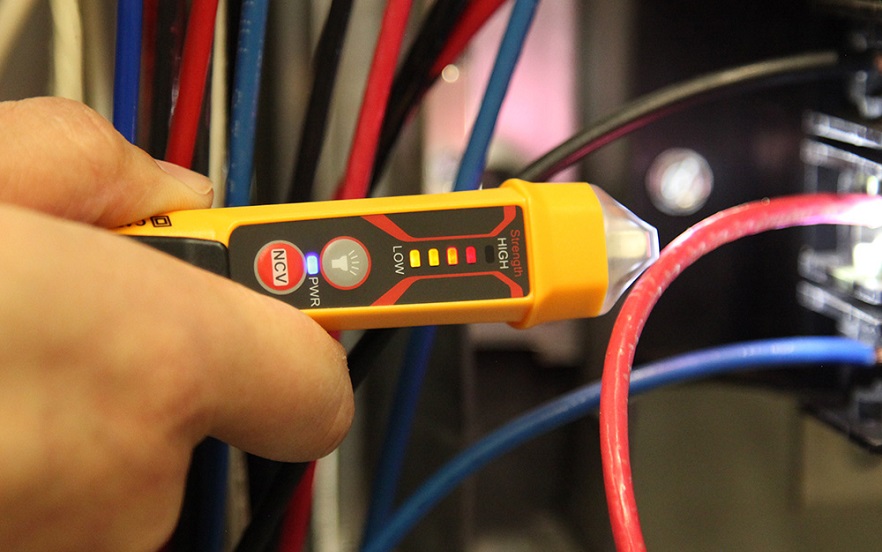Be it an electrical DIYer or a professional, the first and most important tool you should own is a voltage tester. In fact, voltage testers are the most affordable way to check for the presence of a live voltage on switches, outlets, and AC circuits before you start working on them. If you are an electrical DIYer before you make your purchase, you should know that there are three types of voltage testers available on the market. And when it comes to buying one, first, you need to do a through research, understand its types and how they work if you want to get the best of both worlds, quality and effectiveness.
Two-Wire Volt Tester
Just like the name implies, a two-wire voltage tester consists of two leads, wherein the first one is connected to a ground reference while the other one is used for current testing in a wire. How does it work?
The first step is to place one lead on the ground reference which can be a neutral side of an outlet, a neutral white wire, or a box screw. Once done, you should place the other lead on the hot wire or on the hot side of an outlet which is the shorter side of the plug. The same time you place the second lead on the wire, you will be able to read the results on the display of the voltage tester. There should be no light if you have successfully disconnected the electric current, otherwise, the voltage light will be activated.
The first step is to place one lead on the ground reference which can be a neutral side of an outlet, a neutral white wire, or a box screw. Once done, you should place the other lead on the hot wire or on the hot side of an outlet which is the shorter side of the plug. The same time you place the second lead on the wire, you will be able to read the results on the display of the voltage tester. There should be no light if you have successfully disconnected the electric current, otherwise, the voltage light will be activated.
Outlet Tester
If you are looking for something simple and easy to use, outlet testers should be on top of your list. These types of voltage testers have three lights, and the first thing you should do is to plug the voltage tester into the outlet and after that, read the results from the key on top of the tester. If there is no light, this means that you have disconnected the current on the right way.
Non-Contact Voltage Tester
Non-contact voltage testers, on the other hand, don't need to touch outlets or live wires in order to provide a reading. All you need to do is place them very close to the outlet, switch, or fixture you want to test and read the results. If there is a live current, the light of the voltage tester will be immediately activated.
Regardless the type of voltage tester you choose and before you proceed with testing, do not forget to read the manufacturer's review.
Regardless the type of voltage tester you choose and before you proceed with testing, do not forget to read the manufacturer's review.

